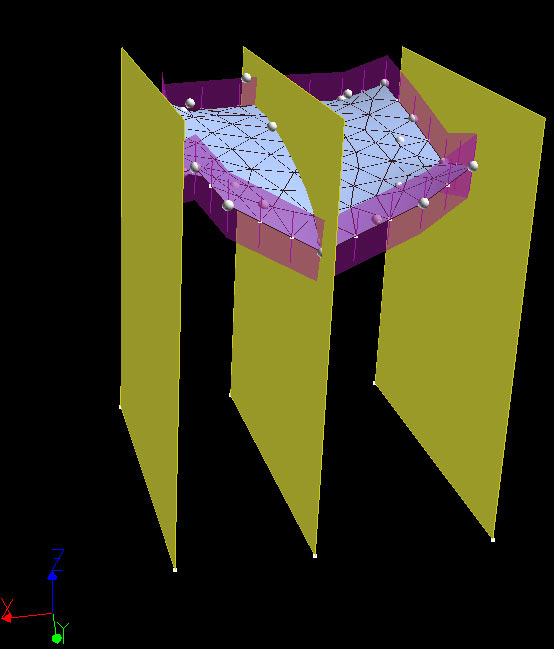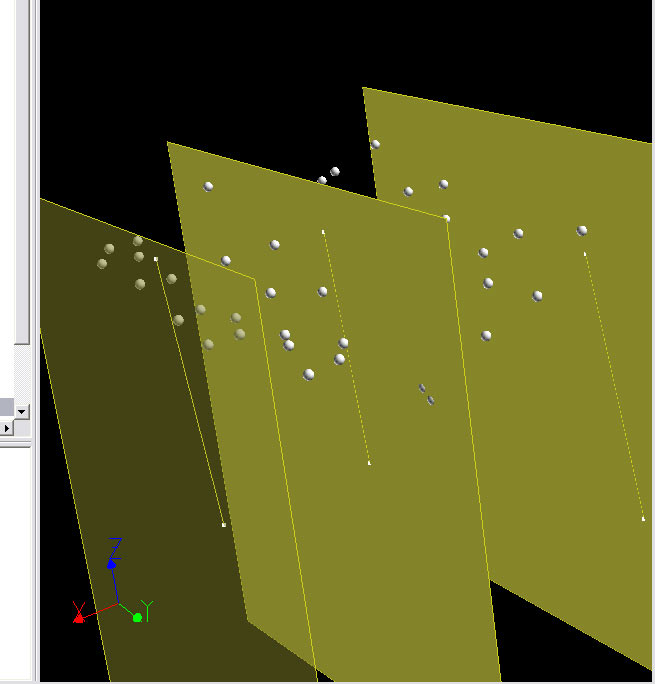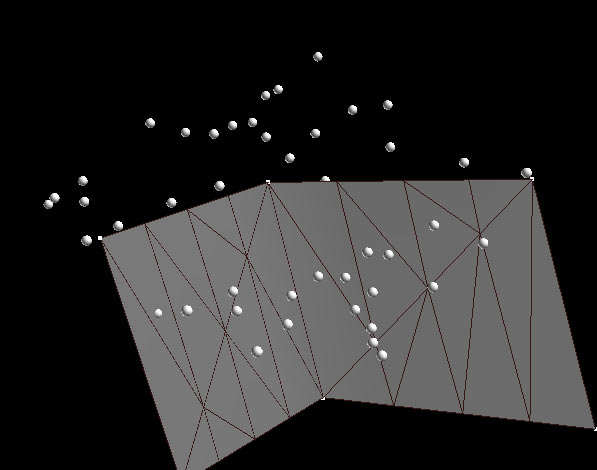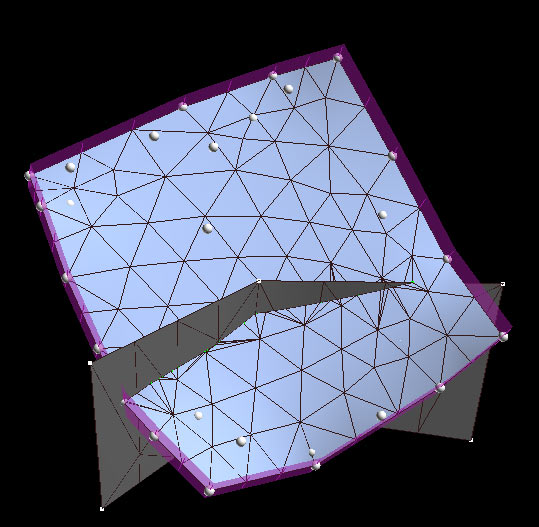
More Gocad
This will give you just a taste of how flexible Gocad is for shaping surfaces by modeling a faulted surface.
Use your previously created project from the previous Gocad primer or copy the project dmap.prj on Q:\Courses\Geo 335-Petroleum\Gocad_primers to your private directory.† This is the completed project from that primer. In that primer we modeled the data as a continuous surface, such as topography, but what if we thought this were data of bed that were faulted?† How could we incorporate the fault?† Traditionally one would contour by hand each fault block separately bound by a line that represented the fault through that bed.† We will sort of do this, but in 3-D with the fault as an actual surface.†
Letís say there is a fault through the center of the data east-west that offsets the data above (higher Y) from the data below.† Our approach will be to create a fault and then cut an uninterpolated surface with the fault and then interpolate each surface (fault block) separately.† In order to make the fault we will first make cross sections that we can draw on.† There are MANY other ways to do this. You are basically sculping the model. For your projects you may do this, or do it other ways. You just need to try things.
Here are the steps using Xsecs in Gocad:
1. In the Objects tab, go to CrossSection then right click. In the popup menu choose New From Digitized Polyline. This will give you a line tool and you left click then right click and you will get a plane that forms. Do this 3 times.

2.† Now look at the surface you have and draw ribs on the cross sections (using the curve tool) where you want to cut.†

3. Now make a surface from the ribs by choosing the Surface menu New>From Several Curves.† This will prompt you to click several curves just like new surface form closed curve (NOTE HOLD THE CONTROL KEY DOWN TO SELECT MORE THAN ONE CURVE):

4.† Cut the original surface with the fault by choosing from Surface menu Edit> By Surfaces:
 †
†
5.† Set the constraints on the surface and run the interpolation and if done right you should have a faulted fitted surface:

Connors, revised '12